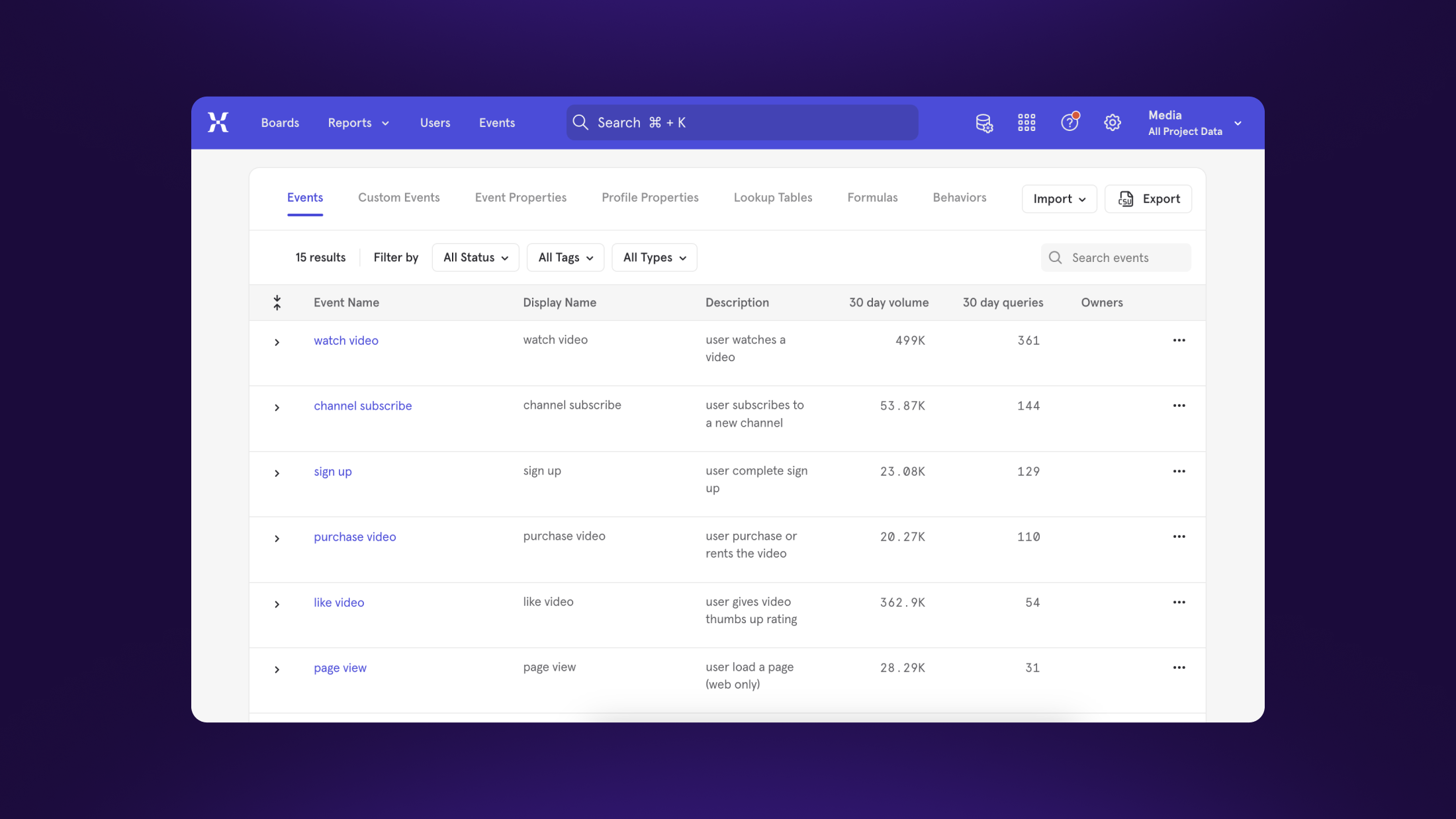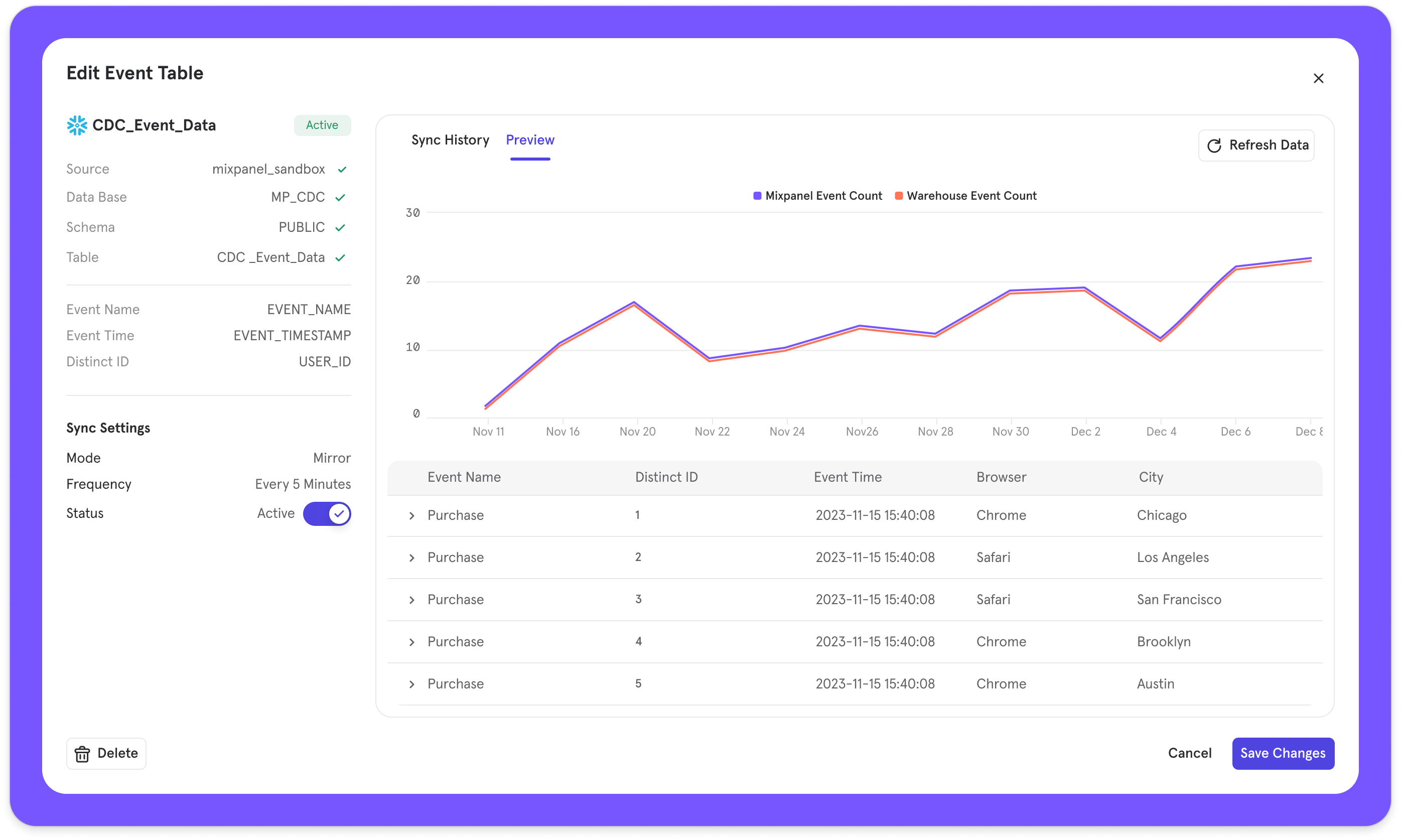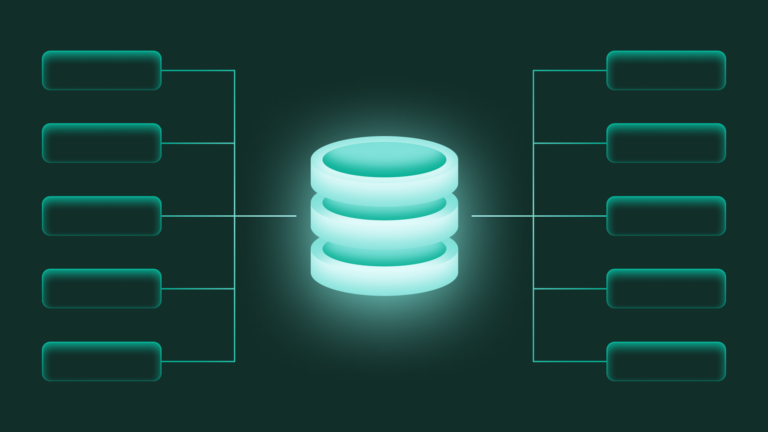
We asked scale-up and enterprise leaders how they use product analytics to grow their companies. Here’s what they told us.


At Mixpanel, we’re always looking to deepen our understanding of our customers. Even though we’re looking at dashboards and numbers plenty, live conversations with product and data leaders provide valuable insights and feedback as we evolve and improve Mixpanel’s analytics platform.
Recently, we interviewed leaders from some notable data-informed companies in the scale-up and enterprise spaces to learn about how they run their operations and teams.
We noticed a trend as we went through the answers and analyzed them alongside case studies of our power user customers: Many of them are using product analytics in varied and interesting ways, and they’re looking way beyond the usual product metrics.
Read on to learn about the unique ways in which these executives and leads in data science, analytics, product, design, and operations are leveraging product data insights to grow more than just their products.
Building data culture
One application of product analytics that tends to fly under the radar has little to do with feature releases and A/B testing. For some product leaders, analytics is a catalyst for creating a more data-driven culture.
By making product data more accessible to different teams through a tool like Mixpanel, leaders also make it easier for those team members to align and make more objective, data-backed decisions together.
This includes team members who aren’t necessarily data experts. In fact, Jaryd Zinkewich, Director of Strategic Insights and Decision Support at ATB Financial, told us self-serve product analytics on his team plays a key role in increasing data fluency. “The great value of Mixpanel is its ease of use. Even if a colleague doesn’t have strong data skills, he or she can still self-serve to answer basic questions,” said Jaryd.
“That creates a virtuous circle because they then build the skills to ask more complex questions to our analysts, so we actually see Mixpanel as a really important way of building data literacy across the organization.”
Even though the goal shouldn’t be to turn everyone in the org into a SQL master, one leader at a top HR SaaS company that’s using self-serve product analytics as a spark for cultural change told us it’s important to recognize the different skill levels of people and look for ways to develop them.
For example, innovators should be celebrated while those on the other end of the spectrum should be encouraged to grow their data skills in things like generating analytics reports and building hypotheses.
It’s not a process meant for those who want immediate overnight results but an approach that takes a longer-term view of cultivating a team’s culture.
Improving cross-functional collaboration
Many leaders are also becoming more open to democratizing access to data because it opens up opportunities for different departments to work together more effectively. If every team can access—and align around—the same data, it ensures everyone is on the same page about objectives, outcomes, and what success means.
A director of product analytics at a fast-moving media company told us they’ve seen these benefits firsthand. Not only does increased collaboration allow their team to turn around insights more quickly, but it’s also taken part of the burden of gathering and analyzing data off their team.
Product managers would often approach their team to ask detailed questions about user behaviors, but it’s not always feasible to support all of these questions, especially with a small team. By making those data points and tools accessible to non-analysts, they’re able to empower those team members to use the tools themselves.
Again, having a robust and easy-to-use product analytics tool is valuable—in this case, because it makes it more likely for teams to actually adopt the tool, use it to collaborate, and have more meaningful conversations about goals and results.
For example, say your product manager is tracking the adoption of a feature on a dashboard and spots a sudden spike, which they flag to the wider team. A marketer with access to the same dashboard may notice that the spike happened on the launch date of a campaign promoting that feature, tying the campaign to performance.
In Mixpanel, that marketer would be able to add this context to a dashboard with text or even photos and videos:

With this data, the team can then build on the campaign’s success and run it again in the future to promote adoption for a different feature.
Driving high-level business outcomes
Unlike entry-level product managers whose goals are mainly to ship features and complete projects, leaders are ultimately accountable for business-level metrics. They need to report to their investors and boards and be able to tell a coherent story about revenue, churn, and other mission-critical metrics.
We like to think we run a data-informed org here at Mixpanel, so we’ve also looked within our own teams during our research process, which has been fruitful.
“Is being better at understanding users and your velocity of shipping improvements to them a key priority? Are you in an extremely competitive environment where the quality and differentiation of your product is among, if not the most, strategic thing that’s going to determine your growth? If the answer is yes, then having good data and making sure everyone can understand it is huge,” Neil Rahilly, VP of Product and Design at Mixpanel, told us.
“As a VP, you’ll have those moments in board meetings where the data has to be right. You’re going to get asked tough questions, and sometimes you’re going to need data to validate a 10- or 20-million-dollar decision.”
With the right tools, it’s possible to use product analytics to drive—and prove—business impact. For example, you could measure metrics like MAU (monthly active users) to estimate how many people are purchasing your product and, by extension, what the estimated revenues will be. This data can then be used to analyze marketing budget performance and also forecast more accurately.
| Pro-tip: If your revenue and financial data is locked up in your data warehouse (like Snowflake, BigQuery, or Redshift), make sure your product analytics tool can make this vital data accessible (i.e., not gated behind SQL) by integrating with those data warehouse tools. |
Matteo Borinelli, Head of Controlling at Evulpo, uses Mixpanel to track performance against financial metrics—and more importantly, board- and investor-level metrics that impact funding.
“Starting by looking at our daily active users, we use this data to estimate how many people are purchasing our product, and therefore what our estimated revenues will be. This data set can then be used to analyze marketing budget performance. As a result, we’ve improved the accuracy of our financial forecasts by a factor of three,” said Matteo.
“With Mixpanel, we now have a reliable base that helps us better understand our runway and plan our growth. Sharing this data with our investors has built trust and contributed to successful fundraising.”
Habit or “ritual” building
An interesting pattern that we noticed is that many leaders review and use product analytics in a highly systematic manner. Some even build their own reports and create a space for them within their weekly rituals as they prepare for presentations and develop strategies.
“I created my own dashboard where I can track all the metrics or trends that support me on defining strategy, both to present internally to my stakeholders and to discuss with the CEO,” Paolo Sabatinelli, CPO at Immobiliare.it, told us.
On top of that, it seems building these habits and regularly reviewing product analytics benefits not only these leaders but also their extended teams.
“If I have nothing to do on a Sunday morning, I like to spend some time looking at the data and dashboards with my mind really fresh,” said Paolo. “It’s a kind of personal moment where I can do a deep dive and identify topics for discovery sessions and alignment with my PMs.”
Many of the most successful teams we spoke with have built sticky product analytics habits by doing a few things consistently. First, they always define what they want to measure up front—far in advance of releasing any features. For example, they’ll note which metrics are most important, how frequently they need to be updated, and have that dashboard built in advance.
Team members also tend to interact regularly with their analytics tool beyond just keeping an eye on numbers. They may go in weekly to make sure event descriptions are up to date or add links or context to explain unusual spikes or dips in the dashboards.
Some teams have even improved unproductive or outdated rituals with the help of their product analytics tool. An analytics manager at a prominent media and events company told us their team used to manually maintain a Google Sheet events dictionary.
Every new event had to be updated in this Google Sheet, which made it time-consuming and difficult to make sure the spreadsheet was always up to date. The team eventually adopted Mixpanel’s Lexicon feature, which lets project owners and admins add descriptions for events and properties and organize data for clarity and discoverability:

Establishing data governance
A natural byproduct of adopting any new application is an increased discrepancy in data, simply because there’s yet another place for data to live.
“As our company has grown, we’ve adopted more and more tools. We have all the tools in the market that you can imagine. Mixpanel, Optimizer, Optimizely, Launchdarkly—plus we have custom data warehouses. That creates, of course, a discrepancy in data, and my teams are responsible for fixing the data,” said Jesus Cagide, Director of Product at Stash.
It’s a common problem in many enterprise companies, and these discrepancies also often result from day-to-day user errors like teams misnaming events or tracking too many duplicative events.
Even though data governance is a complex challenge that a product analytics tool alone can’t solve, it is nevertheless a critical part of the stack needed to maintain data hygiene and trustworthiness.
“For us, step number one was to regroup the tooling and make sure we could capture the user journey. We had to connect everything with Segment and put in the correct plumbing between Segment, Braze, Mixpanel, and our data lake,” said Jesus.
“At the same time, I was partnering with the data team to make sure they could consume these event streams so we could actually see apples to apples—same data source, same funnels, and so on.”
We’ve learned from our conversations with product leaders that the best teams are thoughtful about data governance right from the start. They know exactly where their most trusted data lives and have detailed tracking plans which they regularly review. Most importantly, they use data warehouses that integrate with their analytics tools to ensure data is secure, accurate, and readily accessible.
This was the approach that Jai Mahtani, Product Data Analyst at Taxfix, took to make it easier for teams to access data from Snowflake using Mixpanel. “With Warehouse Connectors, Mixpanel quickly and easily ingested the table, unlocking historical insights,” said Jai.

“Mixpanel also makes it easy to ingest future updates to the table, removing any maintenance burden of the pipeline. All I need to do is maintain the warehouse data, and it’s propagated to Mixpanel.”
Getting more out of your product analytics is a winning formula
Like any good bit of user research, we’re taking all the insights we got from these industry leaders as valuable data to consider as we continue to build analytics that’s powerful and easy for anyone to use. But we also hope sharing how these leaders tap into product analytics as a catalyst for cultural and operational transformation within their organizations can help guide other companies aspiring to traverse the scale-up and enterprise world in more data-informed ways.
Not only can analytics inform feature releases, but it also plays a major role in fostering a culture of data literacy and alignment between teams. As technology continues to evolve, leaders who can successfully leverage—and empower their teams to leverage—product analytics will gain a competitive advantage, improve operational efficiency, and uncover new paths to scalability and growth.
Get fast access to product, marketing, and company revenue insights for your whole team with Mixpanel’s powerful, self-serve analytics. Try it for free.





